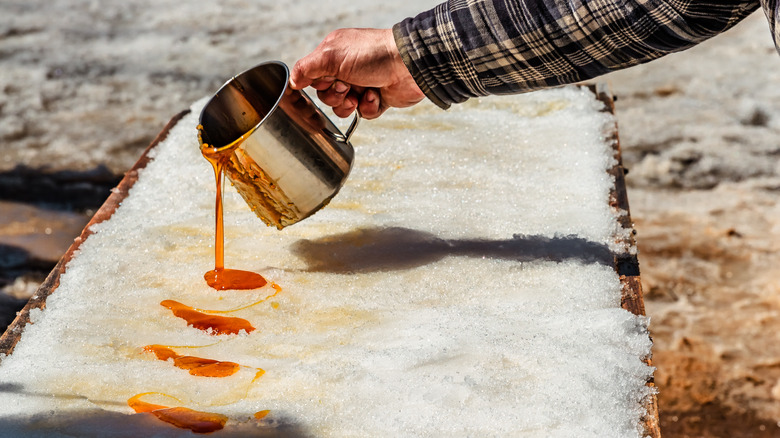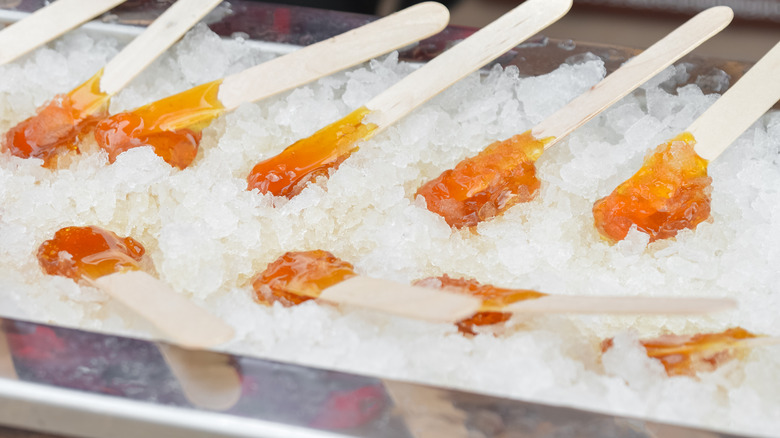How Vermont Uses Snow To Enjoy Maple Syrup To The Fullest
The end of winter is always a time of joy. The cold becomes a bit more bearable, the days start to become longer, and you anticipate the return of colors. But perhaps no one enjoys the beginning of March as much as Vermonters. When day and night temperatures start to differ, pressure causes the sap in maple trees to flow. Since it's still snowing, there's only one logical thing to do: eat sugar-on-snow. Or, more accurately, maple-syrup-on-snow.
A Vermont tradition, this meal is made by collecting fresh, powdery snow and pouring syrup that has been heated to 235 degrees Fahrenheit on top of it. Since the combo is sticky, most people roll it up on a popsicle stick and then enjoy it like ice cream. But in the absence of a stick, a fork will do!
Vermonters absolutely love the contrast of hot and cold, freshness and sweetness that satisfies many different cravings at once. And this isn't where the meal stops. Besides the snow covered in syrup, sugar-on-snow dinners usually include a dill pickle, a plain doughnut, and coffee. Yes, we're being serious. The idea is that each part of the meal brings different temperatures, textures, and flavors. Is it good? It depends on who you ask. Vermonters will defend it with fierceness, but maybe not all out-of-staters will appreciate the unusual combination as much. Still, if you have the chance to try it, don't miss out on it. You might be pleasantly surprised!
Is it safe to eat sugar-on-snow?
Many people who are not from New England or Canada (where this treat is also enjoyed) are wary of trying this regional specialty because of health concerns. Some question whether consuming snow is safe, even if it's fresh. The answer is a bit complicated, since it depends on where you are. The one thing you definitely do not want to do is eat snow that has already touched the ground, as it can carry bacteria from the surface where it landed. You can get around this by leaving recipients out to collect the snow before it touches anything else. But when we questioned experts on whether this was a good strategy, some pointed out that snow can be contaminated by pollution as it's falling from the sky. This is particularly problematic in big cities where the air is full of smog.
On the other hand, whatever you ingest when you eat snow will be in such small quantities that it's unlikely to cause any problems. We're already ingesting things like microplastics and pesticides from our food, so this treat probably won't make much of a difference in our overall health. Those who are in big cities should shave ice at home to recreate the experience. But if you're somewhere where the air is cleaner, feel free to collect snow as it falls and enjoy this tradition — now if we could only make beer snow a regular thing, everything would be magic.

